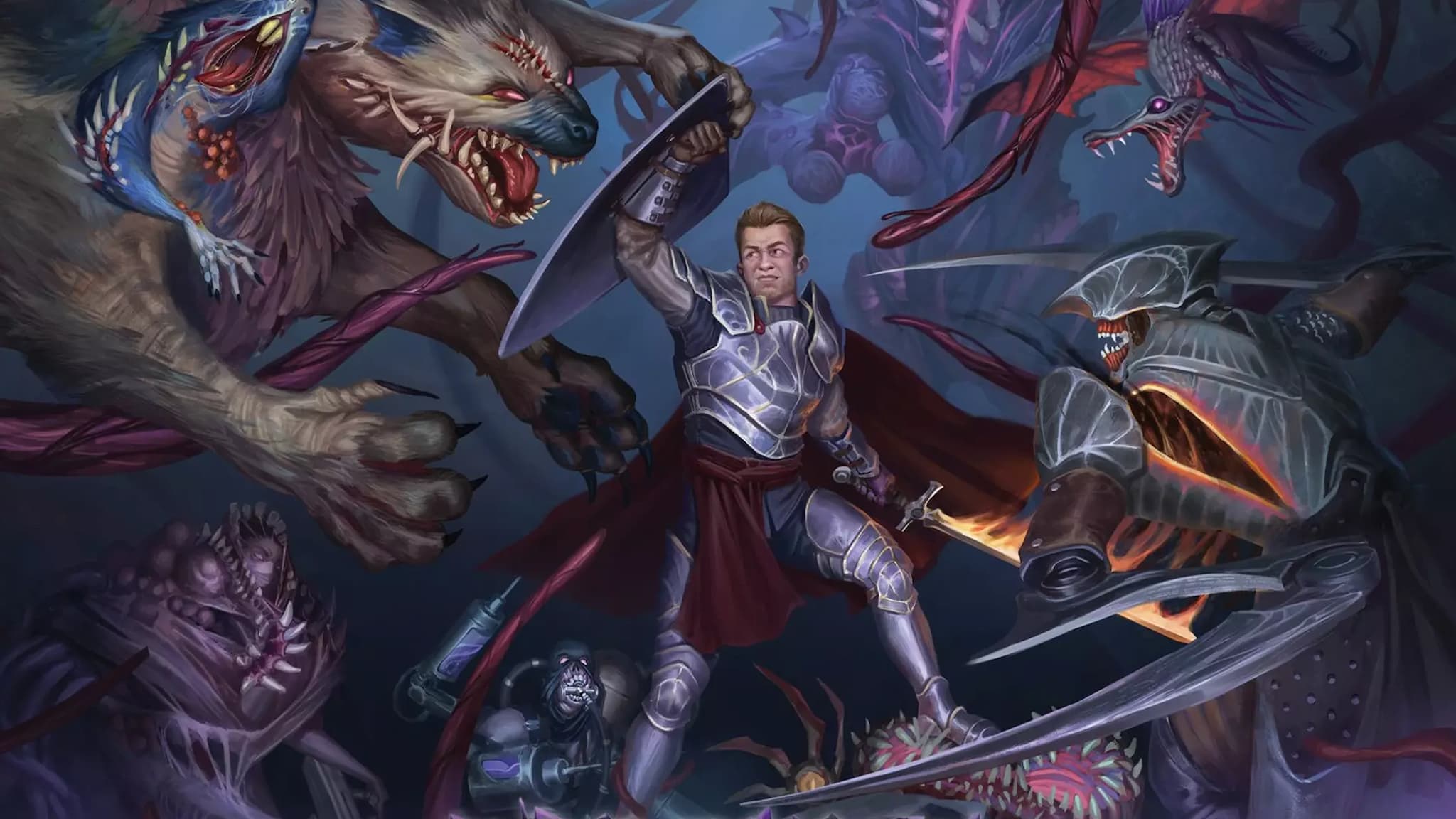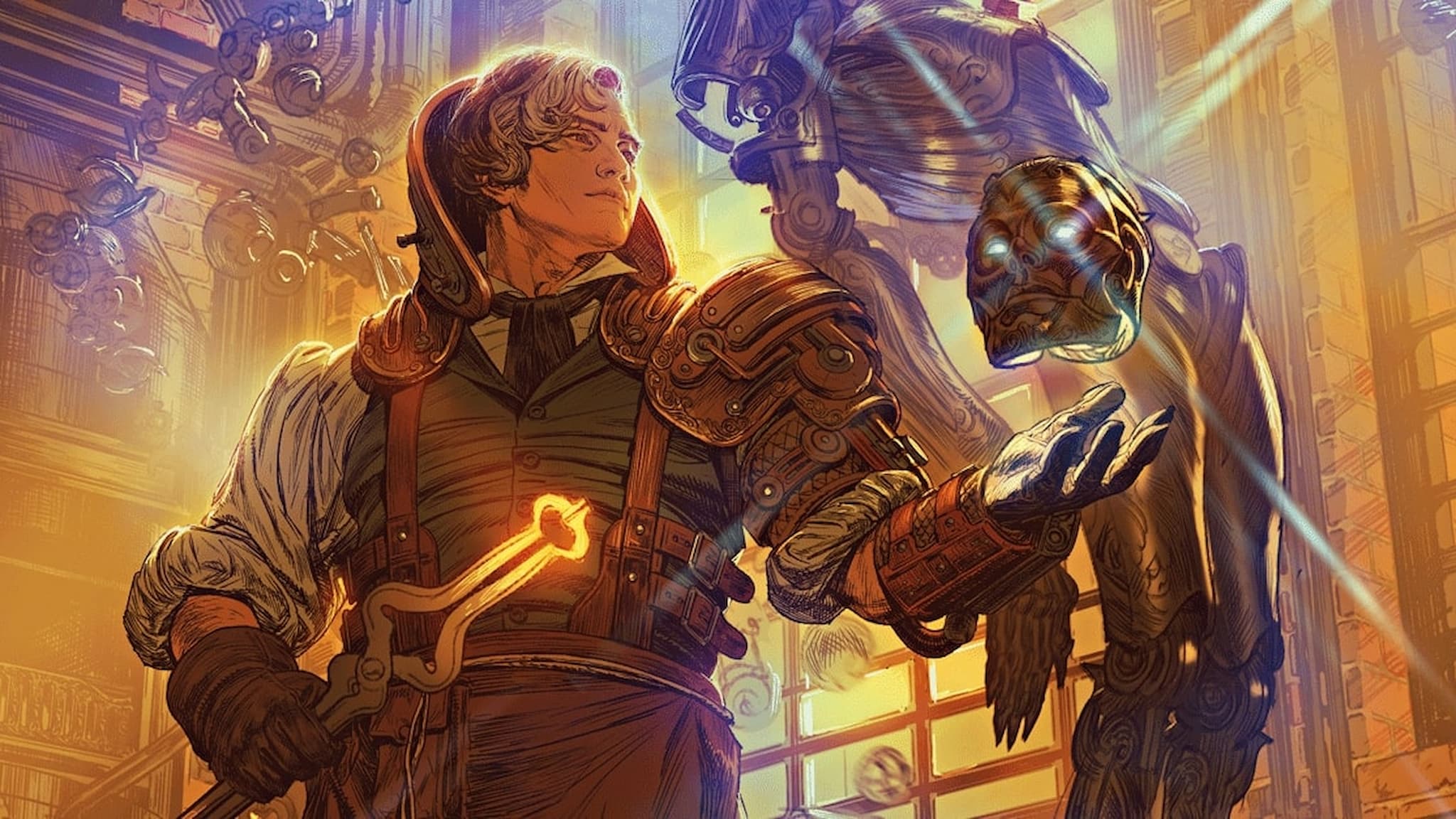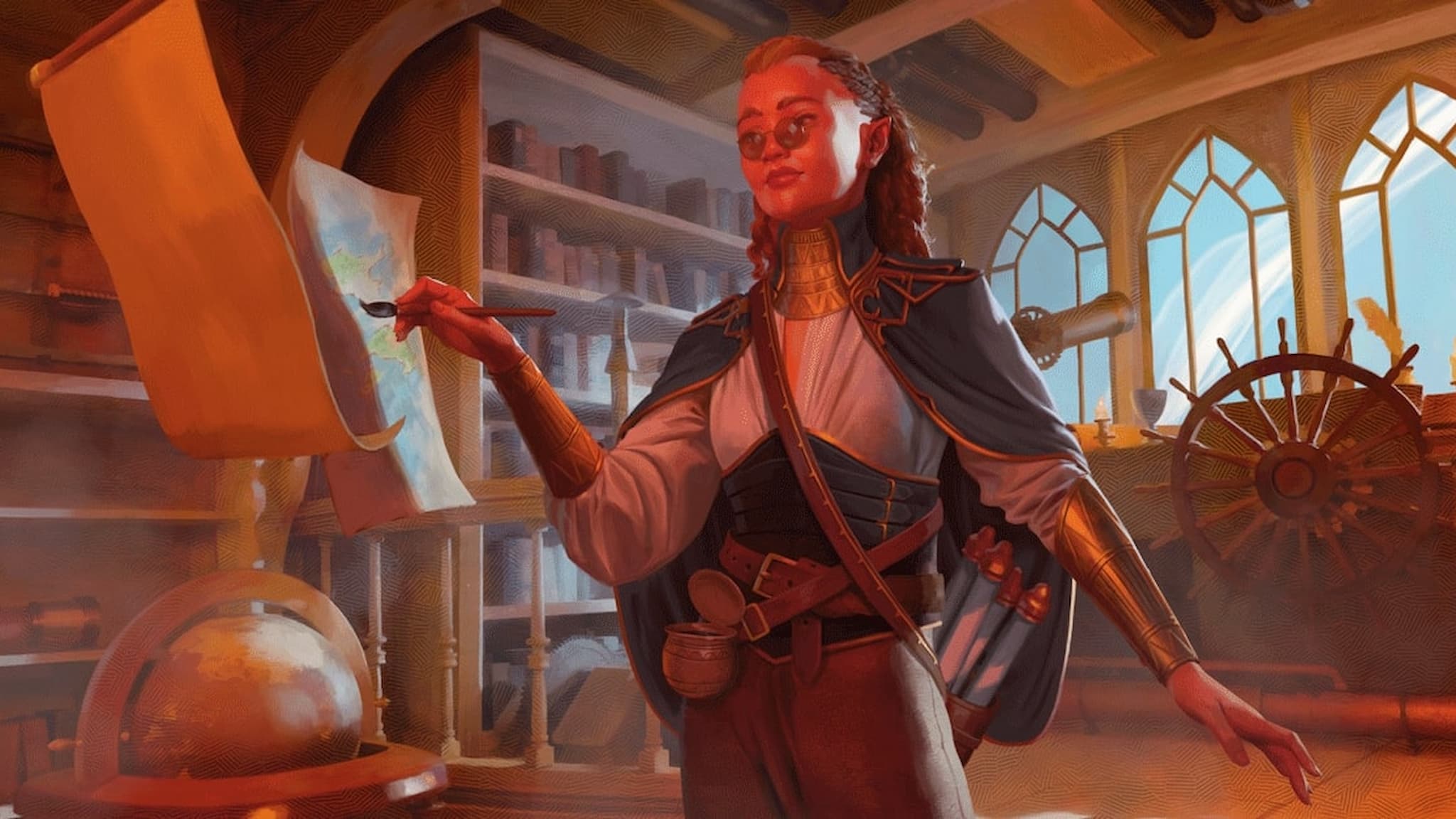
dungeon masters (DMs) and players. The DM is responsible for designing and managing the game’s world, storyline, and events. This role carries significant responsibility, which can sometimes feel overwhelming, especially for newcomers. However, with proper preparation, even first-time DMs can excel at crafting compelling narratives and creating memorable campaigns.
In the realm of Dungeons & Dragons, there are numerous commonalities among skilled DMs, and these qualities can be acquired. Whether you’re just starting your journey as a DM or have led countless games, these suggestions can elevate your gameplay and enhance the enjoyment for both you and your players. Here are ten strategies to help you master the art of being an exceptional DM.
Communication

Effective communication is indispensable for a dungeon master (DM). Before the game kicks off, it’s crucial to outline what the campaign will entail, including its atmosphere, rules, and playstyle. This fosters an engaging environment where everyone feels their input is valued and minimizes potential misconceptions. You can set these expectations during pre-game discussions or in the initial session zero when players gather with the DM. A DM should feel comfortable providing clarifications throughout the game or informing players when certain actions are unfeasible.
Dungeon Masters (DMs) play a crucial role in storytelling by using effective communication to weave intricate plots, captivating narratives, and dynamic character interactions. By speaking clearly, DMs build trust and create an inviting environment where players feel comfortable expressing their ideas and concerns. This open dialogue allows them to influence the development of their characters. Communication isn’t solely about talking; it involves actively listening and adjusting the game based on the needs of the players to ensure a fulfilling and enjoyable gaming experience.
Help Your Players Succeed

In essence, many people mistakenly perceive Dungeons & Dragons as a competitive game pitting players against the DM. However, this perspective is off the mark. Instead, D&D is fundamentally a cooperative game, implying that an effective DM should aim to facilitate player triumphs. This doesn’t equate to simplifying challenges or granting automatic successes. Rather, it involves equipping players with necessary resources, clarifying character abilities, and presenting chances for development.
Encouragement, whether in virtual or real-world scenarios, significantly boosts the players’ spirits by validating their decisions. Even if a player doesn’t succeed in a task, it doesn’t necessarily mean the game should end there. The Game Master can transform that failure into an opportunity to modify the storyline, offer additional options for the player, or intensify the situation. Instead of inflicting penalties, the focus should be on testing the players, not punishing them. This approach encourages their actions and choices to shape the plot and make each experience more memorable.
Be Prepared

Effective planning is crucial for an accomplished dungeon master, as improvisation plays a significant role as well. While it’s impossible to prepare for every move the players might make, knowing the adventure’s details helps maintain a smooth gameplay experience. This involves creating and planning encounters, marking essential locations on maps, and grasping the goals and motivations of both player characters and non-player characters (NPCs). Additionally, it means having a clear understanding of the storyline and considering potential decisions that the party might make.
Given adequate planning, a Dungeon Master (DM) can make the game world feel vivid and flexible, allowing players to influence events that may deviate from the original plot. This flexibility facilitates smooth transitions into new narratives and encourages player imagination. However, excessive preparation might hinder spontaneity and creativity. Achieving a balance between preparedness and improvisation can be tricky, but it paves the way for some of the most rewarding and immersive experiences when playing Dungeons & Dragons.
Don’t Railroad

One common grievance among players is railroading, which they find frustrating due to its restrictive nature and opposition to creative freedom. It’s a trap that game masters (DMs) can unknowingly fall into. For instance, a player might come up with an innovative solution for a problem that the DM hadn’t planned for, or the main villain could be defeated too quickly. In such scenarios, DMs may feel perplexed and believe guiding the player towards the predetermined path is the best course of action. However, this approach can be seen as railroading.
Instead of pushing players along a predetermined storyline, Dungeon Masters (DMs) can utilize this moment as a chance to discover uncharted paths. If you find yourself unprepared, it’s more effective to pause the game and develop a fresh narrative instead of forcing the current one. However, there are instances where railroading might be necessary, but these should be rare. Railroading could occur when the party is stuck and doesn’t know how to progress, but even in such cases, it should be done delicately.
Intertwine Player Backstory

As a passionate game enthusiast, I find myself deeply immersed in the captivating worlds of tabletop role-playing games. While it’s true that the Dungeon Master (DM) holds the reins, crafting the world and dictating its flow, the players are not mere bystanders. We play a significant part in shaping the narrative’s tapestry. One of the most powerful tools at our disposal is our characters’ backstories. Even in pre-designed campaigns, I believe it’s crucial for the DM to inspire us to weave characters with ties to the world. This not only breathes life into our characters but also empowers the DM to elevate the stakes and make each event feel intensely personal, enhancing our overall gaming experience.
In my experience as a gaming enthusiast, session zero is an essential step that allows us, the players, to weave our individual backgrounds into the game’s universe. This integration enables the Dungeon Master (DM) to incorporate our backstories into the gameplay, making the quest more immersive and personalized. For instance, a family member could provide crucial information for a mission, or an old adversary might reappear to assist the antagonists against us. Our backstories not only enrich the group dynamics but also offer unique experiences beyond our character’s stats and class skills.
Playstyle Balance

In the realm of Dungeons & Dragons, there are three key elements that form its foundation: discovery, battle, and character immersion. Game Masters should weave together all these components since each player may lean towards one or more of them. A well-blended mix ensures a satisfying adventure for everyone. This approach caters to what each player enjoys and dislikes, offering opportunities for them to excel in their preferred playstyle. While it’s unrealistic to please every player all the time, using these three elements helps ensure that players are content more frequently than not.
Maintaining a harmony among the three main aspects is crucial, but there are additional factors a Dungeon Master (DM) should take into account. Encounters in battle need to be both engaging yet not overly tough. The journey of exploration ought to incorporate hurdles, incentives, riddles, and various motivators that propel players forward. Engaging Non-Player Characters (NPCs) who players are keen on conversing with, as well as those they must interact with, are essential for role-playing scenarios. Mixing up the application of combat, exploration, and role-playing keeps the experience lively and encourages players to stay alert.
Avoid Saying No

In certain instances, it’s important to firmly say no when required, much like some role-players might learn as they discover that persuasion isn’t mind control. As Dungeon Masters, we should be prepared to halt impossible outcomes or actions that could lead to player conflict, uncomfortable role-playing scenarios, or behaviors that negatively impact another player’s experience. A straightforward communication such as, “That won’t work in this game,” can help maintain a positive and enjoyable gaming environment for all players.
Keep in mind that minimizing “no” responses can foster engaging gameplay experiences. Instead, try using affirmative phrases like “yes” or “yes, but.” This approach not only opens up fresh, invigorating scenarios, but also motivates players to think beyond the ordinary. Encouraging creativity is crucial in games like Dungeons & Dragons, and repeatedly telling players no can stifle their imagination. However, there may be instances when Dungeon Masters need to alert players of potential unforeseen consequences if they continue. By doing so, the DM indirectly allows the player to make an educated decision without directly saying “no.
Don’t Be Afraid to Be Quiet

In many tabletop role-playing games, the Dungeon Master (DM) is in charge of shaping the story and dialogue. Since most non-player characters typically speak with the DM’s voice, and players often seek guidance from the DM about their actions and destinations, it is common for the DM to do most of the talking. However, there are instances when silence can be more beneficial. For example, when players are engaged in solving a puzzle or making an important decision, it may be best for the DM to stay quiet. Yet, there’s another scenario where silence works even better: encouraging player creativity and immersion. By stepping back and allowing players to drive the narrative, they can feel more invested in the game world and create memorable experiences together.
During role-playing sessions among a group, it’s particularly rewarding when the Dungeon Master (DM) can step back and allow the players to engage with each other. This gives the DM a sense that they have successfully drawn the players into the story. This technique is particularly effective when the characters’ individual backgrounds are skillfully woven into the plot, as this increases the tension and encourages players to become more invested. In these instances, by keeping quiet, the role-playing can evolve in remarkable ways.
Tell Your Players What You Liked

Just as players should receive feedback from the Dungeon Master (DM), the DM should also get constructive feedback from their players. This could be in the form of acknowledging the players’ clever strategies or impressive role-playing scenes. In addition to the Inspiration system in D&D, a simple compliment after the game can make a big difference. It not only encourages open dialogue but also lets players know when they are excelling, boosting their self-confidence.
As a fellow enthusiast, I’d like to encourage an open dialogue between you and your players about any aspects of gameplay that didn’t quite hit the mark. It’s often the silence or misunderstandings between DMs and players that lead to D&D horror stories. By having a constructive, respectful conversation about what could be improved in a session, you can help prevent similar issues from arising again, while also ensuring your players know when they might be overstepping certain boundaries. Just remember to approach these discussions thoughtfully, avoiding any tone that may come across as accusatory, as it could potentially have the unintended effect of making the player defensive.
Ask For Feedback

Hey fellow gamer here! You know, as much as we all love immersing ourselves in our D&D adventures, it can sometimes feel a bit nerve-wracking for us players to voice our thoughts back to the DM. We might think it’s not our place to suggest changes or share how we feel about the storyline or gameplay itself. However, I’ve found that when a DM asks for feedback, it makes us feel heard and valued. It opens up a dialogue where we can express what we enjoyed or didn’t like after each session. This helps the DM fine-tune their planning for future sessions, ensuring they create an experience that truly resonates with our group and gives us the kind of game we all crave.
When receiving feedback during gameplay, it’s crucial to approach each comment with an open and receptive attitude. As a Dungeon Master (DM), avoid reacting negatively or defensively to your players’ suggestions, while ensuring they remain within bounds of respect and reason. View these comments as valuable constructive criticism, which can help improve the overall gaming experience. Remember that Dungeons & Dragons is a collaborative game, and its potential for greatness is maximized when both DM and players work harmoniously together. Even in an ongoing campaign, there’s always room for adjustments, and these alterations could be what makes your campaign thrilling and unforgettable in the future.
Read More
- Ashes of Creation Rogue Guide for Beginners
- Best Controller Settings for ARC Raiders
- Meet the cast of Mighty Nein: Every Critical Role character explained
- Fishing Guide in Where Winds Meet
- Avatar 3 Popcorn Buckets Bring Banshees From Pandora to Life
- Netflix’s One Piece Season 2 Will Likely Follow the First Season’s Most Controversial Plot
- Eldegarde, formerly Legacy: Steel & Sorcery, launches January 21, 2026
- Bitcoin’s Wild Ride: Yen’s Surprise Twist 🌪️💰
- STALKER 2 Update 1.7 Rleased on November 17, Brings New Difficulty, Improved A-Life, and More
- Crypto Market: Fear Rages While Wallets Scream 🤯💸
2025-07-19 00:41